What is Stamp Duty and When Do You Pay It?
Stamp Duty Land Tax (SDLT) is the tax charged by the Government on a home buyer when you buy a home in England. The land tax payable depends on:
- What is the consideration for example the purchase price of the property?
- Are you a First Time Buyer?
- Do you already own another property?
- Are you a UK resident?
When do you pay stamp duty?
Stamp Duty must be declared to HMRC on any property transfer where there is consideration being paid. This could be a transfer of equity or a sale and purchase. Your solicitor handling the transfer should file your tax return for you, however, if you are doing your own transfer then this is something you will need to do.
Stamp Duty must be declared to HMRC and paid within 14 daysof the completion of the transaction.
Historic Stamp Duty Rates
The history of stamp duty as a tax dates back to the 1600s although the current system regarding house purchases was largely started in the 1950s. What follows details rate changes in the last few decades.
This is the rate from the 1st of April 2025 for a residential property. You'll typically pay 5% on top of these rates if you own another residential property.
The first-time buyer relief bracket changed from £425,000 to £300,000. You cannot claim this relief if the property price is over £625,000.
Rate | Band |
0% | Up to £125,000 |
2% | £125,001 to £250,000 |
5% | £250,001 to £925,000 |
10% | £925,001 to £1.5 million |
12% | Over £1.5 million |
On this date, the higher rates of Stamp Duty Land Tax increased for purchases of additional residential properties by individuals and for companies purchasing any residential property. The rate for corporate bodies purchasing residential property over £500,000 also increased.
The standard residential property stamp duty rates remained the same.
First-time buyers can claim relief if they purchase a property under £425,000.
Property Value Band | Higher Rate (Until 30 October 2024) | Higher Rate (From 31 October 2024) |
Up to £250,000 | 3% | 5% |
£250,001 to £925,000 | 8% | 10% |
£925,001 to £1.5 million | 13% | 15% |
Over £1.5 million | 15% | 17% |
The Government changed:
- First Time Buyer relief increased from £300,000 to £425,000 and the property limit increased from £500,000 to £625,000.
- Normal rate of stamp duty changed so the first £250,000 there is no stamp duty to pay
Rate | Band |
0% | Up to £250,000 |
5% | Over £250,001 and under £925,000 |
10% | Over £925,001 and under £1,500,000 |
12% | Over £1,500,000 |
The stamp duty holiday expired for properties up to £250,000.
Rate | Band |
0% | Up to £125,000 |
2% | Up to £250,000 |
5% | Over £500,001 and under £925,000 |
10% | Over £925,001 and under £1,500,000 |
12% | Over £1,500,000 |
The stamp duty holiday expired for properties up to £500,000 but the holiday for properties up to £250,000 remained until the 30th September 2021.
Rate | Band |
0% | Up to £250,000 |
5% | Over £250,001 and under £925,000 |
10% | Over £925,000 and under £1,500,000 |
12% | Over £1,500,000 |
Non-UK residents have to pay an additional 2% on top of all other applicable HMRC Stamp Duty Land Tax rates.
The Government implemented a stamp duty holiday to stimulate the housing market post being frozen in April/May 2020 following the COVID outbreak.
Rate | Band |
0% | Up to £500,000 |
5% | Over £500,001 and under £925,000 |
10% | Over £925,000 and under £1,500,000 |
12% | Over £1,500,000 |
Stamp duty at this point became payable only on the portion of the value of the bracket the value fell into - it was the end of the old slab system which attracted much criticism for unfairness.
So the first £125,000 of a property purchase became completely tax-free. The next £125,000 was payable at 2% (or £2,500) etc.
New Buy to Let rates applied from 2016.
Rate | Band |
0% | Up to £125,000 |
2% | Over £125,000 and under £250,000 |
5% | Over £250,000 and under £925,000 |
10% | Over £925,000 and under £1,500,000 |
12% | Over £1,500,000 |
The Government introduced a new 7% rate for property sales over £2,000,000.
Rate | Band |
0% | Up to £125,000 |
1% | Over £125,000 and under £250,000 |
3% | Over £250,000 and under £500,000 |
4% | Over £500,000 and under £1,000,000 |
5% | Over £1,000,000 and under £2,000,000 |
7% | Over £2,000,000 |
The first-time buyer rate is taken away.
The Government introduced a new rate for homes sold for more than £1,000,000, up to 31 December 2011.
Rate | Band |
0% | Up to £125,000 |
1% | Over £125,000 and under £250,000 |
3% | Over £250,000 and under £500,000 |
4% | Over £500,000 and under £1,000,000 |
5% | Over £1,000,000 |
In a pre-election budget, Chancellor Alistair Darling announced a new threshold for first-time buyers to stimulate demand. For first-time buyers only, the stamp duty rate was 0% for properties up to a value of £250,000 with all other bands and rates staying the same.
The government cut the threshold back to the original amount in place before the 'holiday' period.
Rate | Band |
0% | Up to £125,000 |
1% | Over £125,000 and under £250,000 |
3% | Over £250,000 and under £500,000 |
4% | Over £500,000 |
The government took action to combat the Credit Crunch by giving a stamp duty holiday for the basic threshold. This holiday started on 3 September 2008 and finished on 31 December 2009.
Rate | Band |
0% | Up to £175,000 |
1% | Over £175,000 and under £250,000 |
3% | Over £250,000 and under £500,000 |
4% | Over £500,000 |
The government again raised the threshold in its Spring budget but by only £5,000. This applied during 2006, 2007 and up to September 2008.
Rate | Band |
0% | Up to £125,000 |
1% | Over £125,000 and under £250,000 |
3% | Over £250,000 and under £500,000 |
4% | Over £500,000 |
The government doubled the base threshold from £60,000 to £120,000 to help first-time buyers onto the housing ladder.
Rate | Band |
0% | Up to £120,000 |
1% | Over £120,000 and under £250,000 |
3% | Over £250,000 and under £500,000 |
4% | Over £500,000 |
And again at the budget in 2000 the rates increased, and they stayed the same during 2001, 2002, 2003, 2004.
Rate | Band |
0% | Up to £60,000 |
1% | Over £60,000 and under £250,000 |
3% | Over £250,000 and under £500,000 |
4% | Over £500,000 |
In the following year's budget, the rates were increased again.
Rate | Band |
0% | Up to £60,000 |
1% | Over £60,000 and under £250,000 |
2.5% | Over £250,000 and under £500,000 |
3.5% | Over £500,000 |
The government increased rates again less than a year later.
Rate | Band |
0% | Up to £60,000 |
1% | Over £60,000 and under £250,000 |
2% | Over £250,000 and under £500,000 |
3% | Over £500,000 |
The country elected a new Labour government which introduced higher bands to increase the tax taken to help cover its spending plans.
Rate | Band |
0% | Up to £60,000 |
1% | Over £60,000 and under £250,000 |
1.5% | Over £250,000 and under £500,000 |
2% | Over £500,000 |
With average house prices increasing, the Government decided to double the threshold at which the tax started, once again to stimulate demand (although by using less quantity than previously)'; these rates continued to apply in 1994, 1995 and 1996.
Rate | Band |
0% | Up to £60,000 |
1% | Over £60,000 |
As demand grew, the previous change was reversed to discourage negative effects, particularly inflation.
Rate | Band |
0% | Up to £30,000 |
1% | Over £30,000 |
Due to the recession, then Chancellor Nigel Lawson increased the stamp duty threshold to stimulate demand (i.e. he raised the property value at which the tax kicked in to encourage more people to buy and encourage more sales volumes).
Rate | Band |
0% | Up to £250,000 |
1% | Over £250,000 |
The following rates covered years 1984, 1985, 1986, 19887, 1988, 1989, 1990 and 1991:
Rate | Band |
0% | Up to £30,000 |
1% | Over £30,000 |
Andrew started his career in 2000 working within conveyancing solicitor firms and grew hands-on knowledge of a wide variety of conveyancing challenges and solutions. After helping in excess of 50,000 clients in his career, he uses all this experience within his article writing for SAM, mainstream media and his self published book How to Buy a House Without Killing Anyone.
Caragh is an excellent writer and copy editor of books, news articles and editorials. She has written extensively for SAM for a variety of conveyancing, survey, property law and mortgage-related articles.








